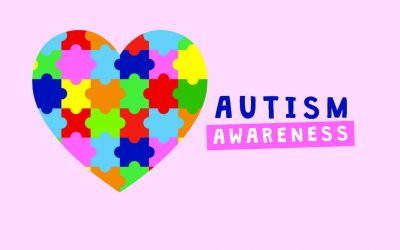Possible Autism Causes From Parents, Pregnancy, Birth
By Miranda Hitti, reviewed by Brunilda Nazario, MD
Pregnancy factors, parental psychiatric history, and preterm delivery may be associated with an increased risk of autism, says a study in the American Journal of Epidemiology.
Here are the potential associations noted in the study: –Breech presentation of the baby –Low Apgar score, an index used to evaluate the condition of a newborn five minutes after birth –Birth before 35 weeks of pregnancy –Parental history of schizophrenia-like psychosis –Parental history of affective disorder, which includes some psychoses, depression, and bipolar disorder However, those traits are not presented as definite causes of autism or as the only possible risk factors for the condition. Of course, not all babies born under those circumstances have autism or related disorders.
‘Possible Associations’ Noted “Right now, we have only identified possible associations,” says CDC epidemiologist Diana Schendel, PhD, in a news release. “But if we can find a cause-and-effect relationship, it may help our efforts to prevent autism.” Schendel worked on the study with other experts.
It’s not known how those characteristics might interact with autism risk.
About Autism
Autism spectrum disorders are a group of developmental disabilities
that are caused by unusual brain development, says the CDC’s Autism
Information Center. Some studies have shown that a rapid and excessive
growth in head size during the first year of life may be an early indictor
of autism.
The spectrum includes autistic disorder (infantile autism), pervasive
developmental disorder, and Asperger’s syndrome.
People with autism spectrum disorders tend to have problems with
social and communication skills, and many have unusual ways of learning,
paying attention, or reacting to different sensations, says the CDC.
The cause of autism spectrum disorders is not known. Studies on twins
and families suggest that genetics may play a substantial role, the new
study shows.
Autism Statistics The study says between two and six per 1,000
children have autistic spectrum disorder, while autism specifically affects
up to two per 1,000 children.
More children than ever before are classified with autism spectrum
disorders. It’s not clear if that’s due to changes in identification or a
true increase in the rates of the disease, says the CDC.
Probing Autism The study focused on autistic disorder (autism), not
other conditions in the autism family. Data came from Denmark’s national
health care system, which has records on virtually all children diagnosed
with autism.
The study included every autistic child born in Denmark in the last 32
years and diagnosed before 2000. Each of the nearly 700 autistic children
was compared with 25 kids without autism.
Parental psychiatric histories prior to the child’s diagnosis of
autism had the highest association with autism, says the study. Taking all
the risks into account, parental psychiatric history increases the risk of
an autism diagnosis by three- to fourfold. The authors do note that there
have been genetic links found between schizoid personality traits and
autism.
Autism was not associated with infant weight, number of previous
babies born to the mother, number of doctor visits before pregnancy,
parental age, or socioeconomic status.
Findings May ‘Add to Evidence’ The study doesn’t prove that events
before and around birth are risk factors for autism, says a journal
editorial.
However, the research “does add to the growing body of evidence
suggesting that these events do occur more commonly among children with
autism and that they should be studied further,” write editorialists Craig
Newschaffer, PhD, and Stephen Cole, PhD, of the Johns Hopkins Bloomberg
School of Public Health.
CDC: New Study Is ‘Helpful’
“This study is a helpful step forward in identifying possible risk
factors for autism,” says José Cordero, MD, MPH, in a news release. Cordero
directs the CDC’s National Center on Birth Defects and Developmental
Disabilities.
“It also indicates that there may be some children for whom we need
extra vigilance in watching for signs of developmental delay,” he continues.
“In recent years, many programs and studies have found that early
recognition of autism is important because early treatment can significantly
improve a child’s development.”
Treating Autism Here’s what the CDC says about treating autism
spectrum disorders (ASDs): “There is no known cure for ASDs. However, early
and intensive education can help children grow and learn new skills. The
goal of these efforts is to help with the difficult symptoms of an ASD in a
child and to improve the child’s skills that help him or her talk, interact,
play, learn, and care for his or her needs. Medicines can relieve symptoms
and be helpful for some people, but structured teaching of skills (often
called behavioral intervention) is currently the most effective treatment.”
SOURCES: Larsson, H. American Journal of Epidemiology, May 15, 2005;
vol 161: pp 916-925. Newschaffer, C. American Journal of Epidemiology, May
15, 2005.


